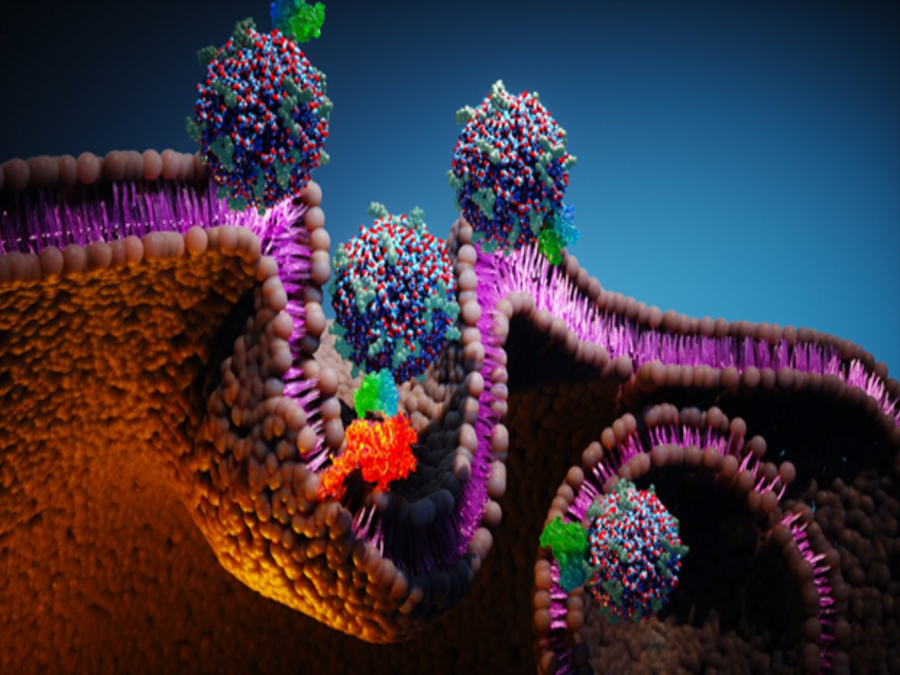Targeting cancer cells using nanoparticles for therapeutic purposes
Tumor eradication via antibody fragment-nanoparticle therapy:
Developing novel and cutting-edge cancer treatments is a significant global issue. The therapeutic efficacy of certain malignant tumors has significantly increased due to the development of personalized treatment plans and an increase in the number of cancer therapy options. One common and established cancer treatment strategy is chemotherapy.
Chemotherapy has several distinct mechanisms of action, but its primary purpose is to kill rapidly proliferating cells, both tumor and normal cells. This can have serious side effects, such as gastrointestinal reactions, hair loss, and suppression of bone marrow. Thus, a major focus of cancer research in the past several years has been on creating medications that more precisely target tumor cells rather than healthy ones.
Nanoparticles:
The last few decades have seen a rise in the use of nanotechnology in medicine, including safer and more efficient methods of tumor targeting, diagnostics, and therapy. Drug delivery systems based on nanoparticles have demonstrated numerous benefits in the treatment of cancer, including improved pharmacokinetics, accurate targeting of tumor cells, decreased side effects, and decreased susceptibility to drug resistance.
The size and features of nanoparticles utilized in medication delivery systems are often selected or created in accordance with the tumors’ pathophysiology. Nano-carriers in cancer therapy mechanically target tumor cells by means of the NPs’ carrier effect and the targeting substance’s placement action upon absorption.
The medications are then released onto the tumor cells to cause death. Traditional chemotherapy drugs and nucleic acids are among the drugs found inside the Nano-carriers, suggesting that they may be used in both gene therapy and cytotoxic treatments.
Cancer diagnosis and treatment:
Despite a great deal of research on Nanomedicine, there are still a lot of unmet medical needs in the detection and treatment of cancer. Cutting-edge multimodal imaging capabilities guarantee early disease diagnosis, real-time monitoring, and assessment of the disease’s reaction to the prescribed treatment plan. To diagnose histopathology, David R. J. Snead and associates offer statistical proof that digital pathology is superior to glass slide microscopy.
Recent research has also looked at how various nanomaterials’ intrinsic properties, when combined with their ability to trigger biological reactions and signals, can be utilized to restrict tumors. However, the most significant effects of Nanomedicine will come from its conjunction with conventional treatments like cell therapy and radiation. Timed combination therapy, in which medication and siRNA are delivered sequentially from liposomal nanoparticles, may be the key to overcoming chemoresistance, according to recent animal studies.
Nanoparticles’ Mode of Action:
Reactive oxygen species (ROS)-mediated apoptosis is the most extensively researched mechanism via which nanoparticles generally cause apoptosis in cancer cells. Other methods of action of nanoparticles in inducing apoptosis in cancer cells include immunological interventions, up-and down-regulation of proteins, transcription inhibition, and site-specific cytotoxicity. At this stage, it is important to note that many of these steps are interdependent, although apoptotic cell death is the result.
Creation of NPs:
The NPs come in a variety of sizes, shapes, and architectures. Many different synthesis techniques are used to accomplish this. These techniques can be broadly divided into two groups: 1) top-down approach and 2) bottom-up approach. These methods can be divided into additional subgroups according to how they operate and respond to certain circumstances.
Bottom-up Method:
The constructive approach refers to the process of developing material from atoms to clusters to nanoparticles (NPs) by building from simpler substances. Spindling, sol-gel synthesis, chemical vapor deposition (CVD), plasma or flame spraying synthesis, laser pyrolysis, and biosynthesis are a few often employed techniques.
Top-Down Method:
It is sometimes referred to as the destructive approach since it uses less bulk material or substance to create NPs. NPs are produced through the breakdown or decomposition of a bigger molecule into smaller pieces. It encompasses methods including thermal breakdown, sputtering, laser ablation, chemical etching, mechanical milling, nanolithography, and electro-explosion.
Nano medicine’s future:
Despite a great deal of research on Nanomedicine, there are still a lot of unmet medical needs in the detection and treatment of cancer. Nanotechnology has enormous possibilities for the future of cancer treatment and diagnosis in medicine. drives ongoing advancements in the design of diagnostic Nano-biotechnological devices.
These devices, which have diameters of hundreds of atoms, are a significant advancement that has the potential to revolutionize medical data collection, the ability to detect chemical changes in the body, the ability to track a patient’s status in real-time, and the development of nanoscale microscopic cameras.
With an unprecedented level of detail not achievable with X-ray or MRI technology, all of these developments can offer a comprehensive map of the majority of the human body’s tissue. It is possible to speed up gene sequencing and chemical analysis by using quantum dots as an optical barcode.
Ultimately, this opens the door to the potential of quicker, less expensive, and more accurate diagnostic procedures conducted outside of the body. The potential for early diagnosis and treatment of numerous illnesses before they have a chance to spread will arise from these advancements at the cellular and molecular levels.
Source
- https://news.cornell.edu/sites/default/files/styles/story_thumbnail_xlarge/public/0316_cdots_0.jpg?itok=-kd9qIRZ
- https://www.frontiersin.org/articles/10.3389/fmolb.2020.00193/full
- https://www.ncbi.nlm.nih.gov/pmc/articles/PMC8645667/
- https://www.sciencedirect.com/science/article/pii/S2214180416300903
- https://www.bitsathy.ac.in/glory-lilys-nanoparticles-for-cancer-drugs/

